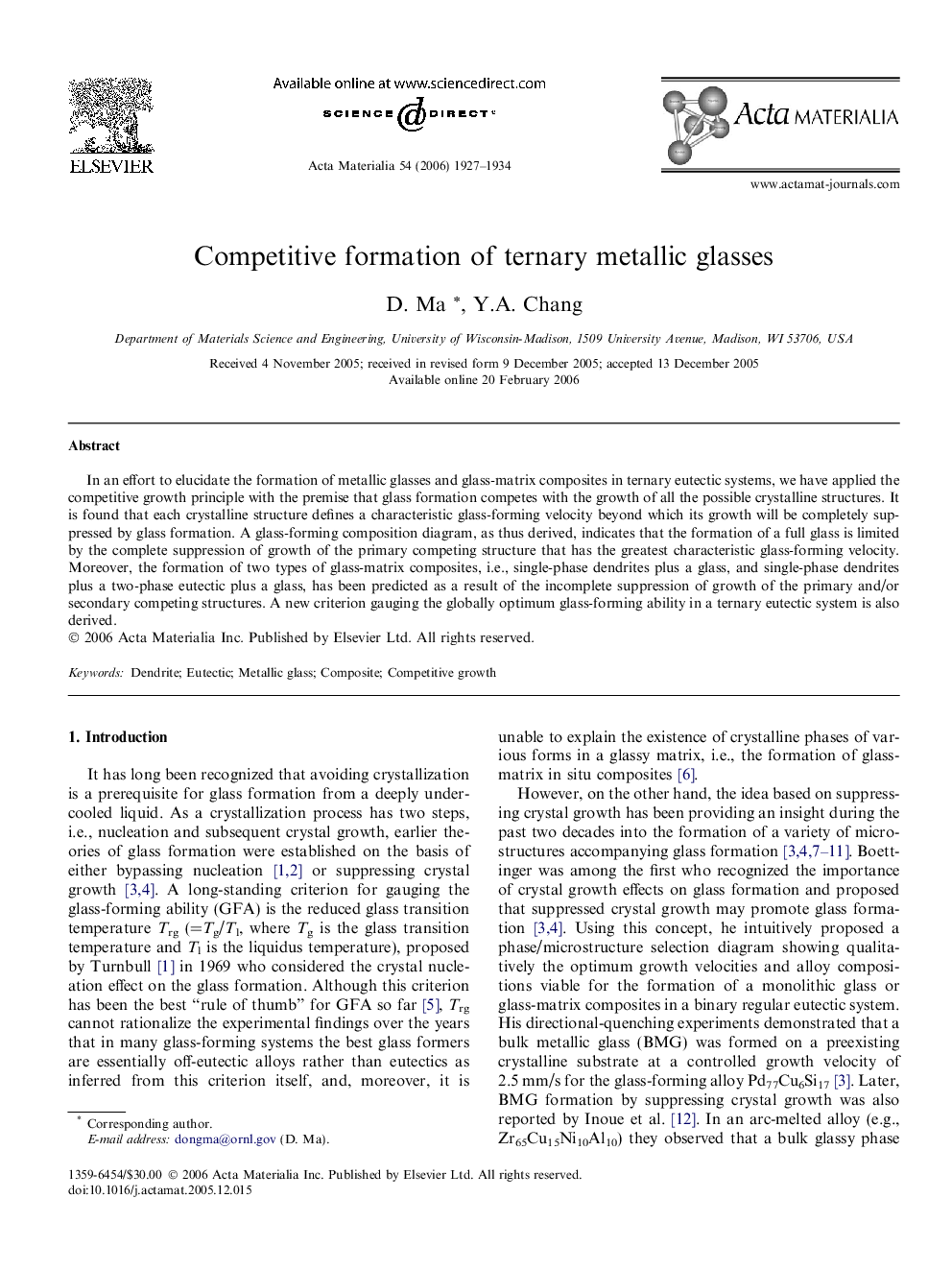| Article ID | Journal | Published Year | Pages | File Type |
|---|---|---|---|---|
| 10620918 | Acta Materialia | 2006 | 8 Pages |
Abstract
In an effort to elucidate the formation of metallic glasses and glass-matrix composites in ternary eutectic systems, we have applied the competitive growth principle with the premise that glass formation competes with the growth of all the possible crystalline structures. It is found that each crystalline structure defines a characteristic glass-forming velocity beyond which its growth will be completely suppressed by glass formation. A glass-forming composition diagram, as thus derived, indicates that the formation of a full glass is limited by the complete suppression of growth of the primary competing structure that has the greatest characteristic glass-forming velocity. Moreover, the formation of two types of glass-matrix composites, i.e., single-phase dendrites plus a glass, and single-phase dendrites plus a two-phase eutectic plus a glass, has been predicted as a result of the incomplete suppression of growth of the primary and/or secondary competing structures. A new criterion gauging the globally optimum glass-forming ability in a ternary eutectic system is also derived.
Related Topics
Physical Sciences and Engineering
Materials Science
Ceramics and Composites
Authors
D. Ma, Y.A. Chang,
